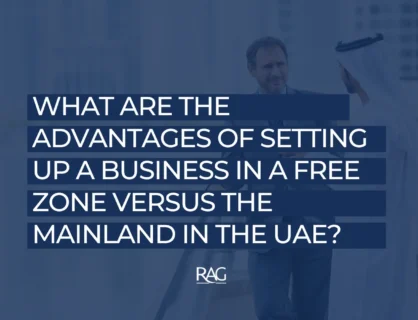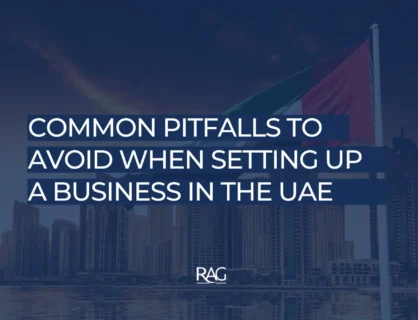How UAE is Positioning itself as a Transit Hub

An Emirates Flight Taking Off
Introduction
The UAE is a small Gulf country that has a population of close to 10 million. Since the United Arab Emirates was formed in 1971, the region has undergone tremendous changes that have impacted many business and geopolitical areas and have had an impact on life.
The 17th largest reserves of natural gas in the world and the seventh-largest reserves of oil in the world has made the UAE famous around the world. However, thanks to its strategic location, oil resources, innovative leadership, tax regulations, stable governance, and market-friendly government policies, this country of contrasting landscapes has recently become an important regional and international business player.
The UAE has a strategic position between Asia, Europe, and Africa on the new Southern Silk Road, a position that offers optimal trade conditions and guarantees that the UAE is prepared to take advantage of economic activity among the world’s fastest-growing and emerging economy. The centralized location of the UAE in the world has made the country:
- A gateway to the Middle East and African countries
- A strategic shipping and logistics hub and,
- A transit hub for air passengers
UAE as a Gateway to the MENA AND AFRICAN Countries
The United Arab Emirates has already succeeded in developing itself as a hub for the Middle East and MENA center offices of multinational companies in the past two decades. The laws in the UAE are generally friendly to foreign companies. There is legal clarity and, relative to other nations, an outstanding infrastructure.
A significant role is played by the popular Dubai brand, as it is commonly linked with economic prosperity and progressiveness, which are both beneficial to the other emirates. This also draws many expatriates, in addition to visitors, who form a rich pool of local applicants. While ten years ago, the fluctuation among expatriates was high, more and more foreign workers came to treat the Emirates as their second home.
Finally, from a strategic viewpoint, the UAE is ideally positioned. The important locations in the UAE can be reached from various international airports within a few hours. Two-thirds of the world’s markets are within a flight time radius of eight hours.
In terms of exports to African countries, the UAE has seen good growth. Due to improved trading relations between both nations, the decade saw a strong leap in exports. Dubai is now strengthening its position to become a gateway to the markets in the African and Middle East. The economic situation is continually trying to change around the whole African continent and the countries of the Middle East.
The most favorable location in UAE for starting up a company has always been Dubai followed by Abu Dhabi. The reasons for making Dubai an attractive business location in the Middle East and Africa are as follows:
Dubai, because of its attractive market set-up policies, is regarded as the center for investment. The government provides foreign investors who want to set up businesses in the nation with numerous facilities.
There is a large coastline in Dubai, and it is a center for world aviation. The country’s geographically good position offers good trading prospects, and individuals can travel freely between countries as well. Due to its worldwide recognition and higher wages, Dubai draws a wide population of professional workers. Furthermore, the government is actively making attempts to boost the productivity and skills of the new workforce. This allows corporations to save a good part of their workers’ training money.
With the constant increase in the country’s growth, setting up a company in Dubai is a wise decision. Dubai is a perfect location to expand business by exporting goods to untapped markets such as the Middle East and Africa, as a global pioneer of business hubs.

Among the exports from the UAE, Saudi Arabia leads with 5.6% followed by Iraq with 2.92% and Oman with 2.65%.
UAE as a Strategic Shipping & Logistics Hub
The UAE is one of the major shipping hubs between Europe and the Eastern world. The UAE spans more than 600 kilometers in length and runs along the southern coasts of the Persian Gulf and the Gulf of Oman, making it the ideal place for sea routes to import and export products to the rest of the world.

Jebel Ali Free Zone (Image Source: Gulftoday)
The geographically accessible position encourages many enterprises to work together efficiently on an international basis. The UAE skyrocketed in terms of prosperity and prominence due to prosperous oil discovery in the sixties and was put on the global map as a nation. The UAE had thrived on its pearl industry before the oil discovery, which soon ended after the Japanese invented cultured pearls.
In 2018, the government of UAE invested over $65 Billion for the development of the port infrastructure of the country to make the UAE has the maritime hub both regionally and globally.
With over 20 ports, UAE was placed in the 14th position as the world’s leading maritime nations, many of which are among the top 10 ports in terms of modern infrastructure in maritime transportation. UAE ports are ranked fourth in terms of logistics in the world.
Overall, 61% of cargo bound for GCC countries comes from the seaports of the UAE. There are 12 international trade ports in the UAE, other than ports for crude. 310 berths are included, with a freight capacity of 80 million tons.
Over the past 35 years, the Jebel Ali port in Dubai has been the flagship of this worldwide development and transport. It runs a high-end automated container handling system that allows up to 22.4 million containers per year, an increase from 18 Million containers in 2015. The port of Jebel Ali is currently linked to more than 180 shipping channels and more than 100 international ports worldwide. Located at the gateway between the West and the East, the port is strategically located as a strategic hub for the global shipping sector, offering access to the market for 1.5 billion people. The geographical location of the port has allowed it to act as a sea link between the Far Western and the Eastern part of the world.
The port of Khalifa in Abu Dhabi, built-in 2012, links more than 70 ports worldwide. The port of Khalifa handles 12 million tons of cargo annually. The old port of Abu Dhabi, Al Mina, was reestablished as a passenger cruise terminal, thereby expanding the tourism industry. Other players like Port Rashid and Dubai Creek are currently being renovated to compete in the marine transportation market. Other ports in the neighboring Emirate of Sharjah, owing to their geographically ideal position linking to both UAE coasts, are also recognized as gateways to the UAE.

UAE as a Transit Hub for Air Passengers
UAE’s strategic position as the center of the world makes the country the perfect transit location for air passengers. The UAE is a crucial point on the modern Silk Road for aviation, a long stop on trading routes between Europe and Asia. With no snow to scrape off the runways and no unions to strike—and two-thirds of the world’s population on an eight-hour flight—Dubai has rapidly become the dream air connection. And that, along with other Gulf carriers such as Qatar and Etihad, has helped government-owned Emirates Airlines to shave off huge volumes of Singapore Airlines and Cathay Pacific traffic.
In the 1980s, Singapore Airlines, Malaysia Airlines, Cathay Pacific, and Air India arrived with tight rest constraints on flying across Russian airspace, drawn to Dubai’s convenience as a resting point for travel through Asia and Europe.

Dubai Airport (Image source: The National)
Dubai and Abu Dhabi have handled most transit air passengers within the seven emirates. More than 56 million passengers that went via Dubai International airport in 2018 were in transit.
As Dubai expects 20 million annual visitors by 2020, plus an extra five million for Expo 2020, 70% are predicted to visit Dubai by 2020. A variety of layover tourism initiatives have been introduced, including dedicated tourism packages and new transit visas.
Between 2007 and 2017, Abu Dhabi reported a growth of 1.4 percent in the hub connectivity, above the growth rate of major international hubs in Europe and North America. The Gulf and Asian hubs have been pushing a shift in airport hub dynamics.
There were 3,237,011 transfer and transit passengers at Abu Dhabi International airport in 2007, a number which grew to 15,853,770 in 2016. The rise of the national carrier, Etihad Airways, and it is enlarged network and improved connectivity have largely resulted in such a major transition.
The country’s government and businesses are optimistic that positing UAE as a transit hub will bring large scale investments and business opportunities. RAG Business Group has deep experience in launching entrepreneurs (company formation, market research, distributor search, etc.) in the United Arab Emirates. Contact us at Toll Free Number 800724249 or write to: info@ragroup.ae to know how we can support you in launching a new company in UAE.
Blogs

How to Create a Bakery Business Plan in the UAE in 2025

Building a Lean Business Plan That Actually Works in UAE

How to Start Your Consulting Business in Dubai?

What Are the Advantages of Setting Up a Business in a Free Zone Versus the Mainland in the UAE?

Common Pitfalls to Avoid When Setting Up a Business in the UAE

How to Identify Your Perfect Niche and Stand Out from the Competition in 2025 in Dubai

How to craft a bulletproof business continuity plan in Dubai in 2025



